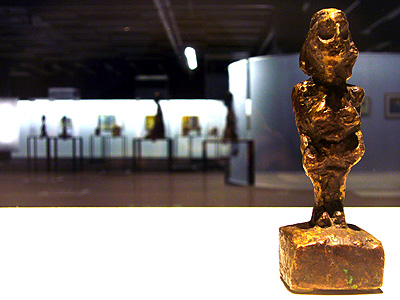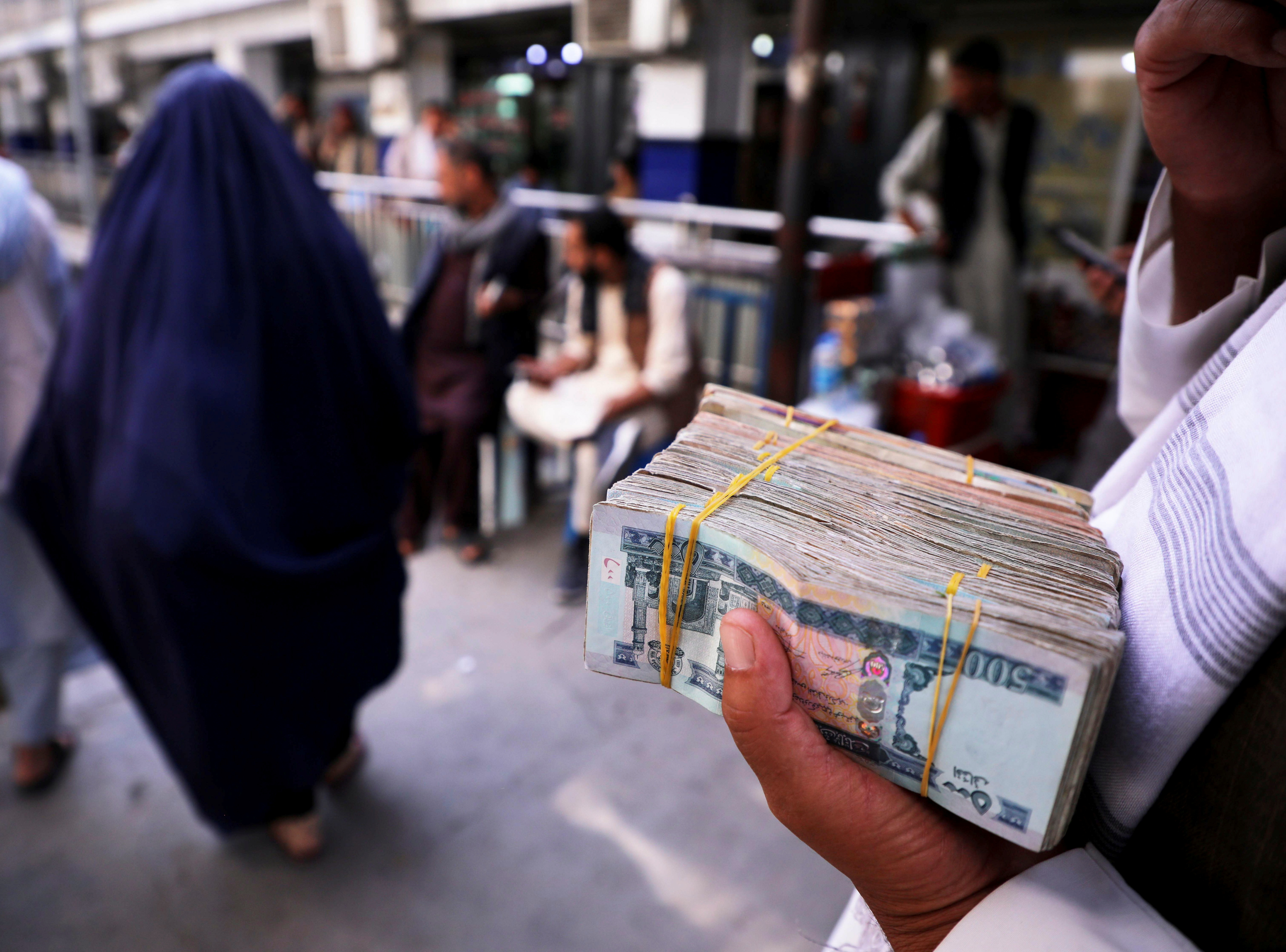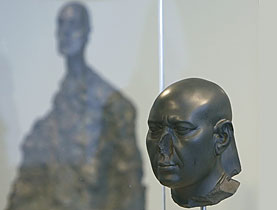Art was a family affair for the Giacomettis

A major art exhibition devoted to Switzerland's talented Giacometti family of artists has opened in Geneva at the city's annual book fair, the Salon du livre.
It features works of the most celebrated family member, Alberto, but also those of his father, Giovanni, and his brother, Diego.
International recognition of Alberto’s sculptures, with their slender, elongated human figures, has tended to overshadow the father and brother.
“It is always Alberto who holds the stage and the others are less in the spotlight,” commented Frédéric Künzi, who organised the exhibition and wrote the accompanying catalogue.
“It seemed interesting to me to try to compare the different ways in which each artist saw the same subject,” he told swissinfo.
The Geneva exhibition shows how they each viewed the family village of Stampa in the canton of Graubünden near the Italian border, as well as another family member, Ottilia, Alberto and Diego’s sister.
On display are 28 watercolours and 19 oil paintings signed by Giacometti senior (1868-1933). Giovanni, a representative of Swiss neo-impressionism, enjoyed true recognition for his work from the end of the 19th century to his death, holding many exhibitions.
This may be surprising in view of the fact that, despite stays in Munich and Paris, he spent most of his career in the remote mountains of Graubünden.
Great bond
“There was a very great bond between Giovanni and Alberto, but there were also artistic conflicts because Giovanni wanted to portray things much more figuratively than his son,” Künzi said.
Recognition was much harder to achieve for Alberto’s brother, Diego, who was born a year after his brother.
“There was always some distance between Diego and his brother, but he actively took part in Alberto’s works. It was Diego who mixed the plaster, he was the one who coated patina on the sculptures. He was an integral part of Alberto’s works,” Künzi added.
Alberto devoted himself almost entirely to the human figure. Diego, on the other hand, was more interested in the worlds of flora and fauna.
“But there are a few rare human figures, rather spindly, that are similar to those of Alberto,” Künzi noted.
Alter ego
“He always identified himself – with discretion, but not without pride – as Alberto’s alter ego,” wrote Daniel Marchessau, director of the Musée de la Vie Romantique in Paris.
“It needed the death of Alberto for Diego to dedicate himself over the next two decades to a highly personal style. He did not attach much importance to this style, but he was fully conscious of its originality.”
Künzi adds that Diego “really began to blossom” artistically during this time.
All Diego’s works on display in Geneva – furniture and animals, including the extremely rare “Lioness” from early in his career – have come from the artist’s home and studio.
As for Alberto, Geneva is showing 23 of his works, including a strange and tiny sculpture of a woman.
Never satisfied
“He was never satisfied and began a work several times. In the exhibition we have one of these small works, Woman Standing, which in the beginning was much bigger,” Künzi said.
“At the end of a night’s work, because he kept worked on it, it had been reduced in size from 30 centimetres to ten.”
The exhibition devoted to the Giacometti family runs until April 26.
Those unable to visit the display in the western Swiss city might be interested in the SFr100 ($85.7) banknote instead. It features Alberto Giacometti and his sculpture, Man Walking. But you won’t find Giovanni or Diego on it.
swissinfo, based on an article in French by Bernard Léchot
The 23rd Geneva Book Fair runs April 22-26
Guest of honour: Turkey
It is being held at Geneva’s Palexpo exhibition centre.

In compliance with the JTI standards
More: SWI swissinfo.ch certified by the Journalism Trust Initiative











You can find an overview of ongoing debates with our journalists here . Please join us!
If you want to start a conversation about a topic raised in this article or want to report factual errors, email us at english@swissinfo.ch.